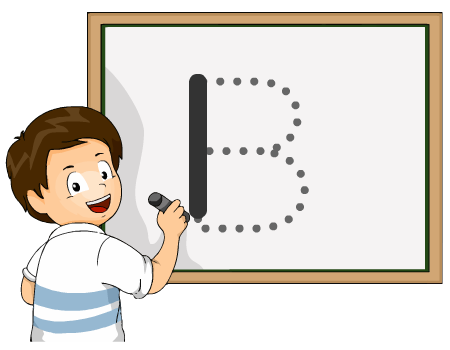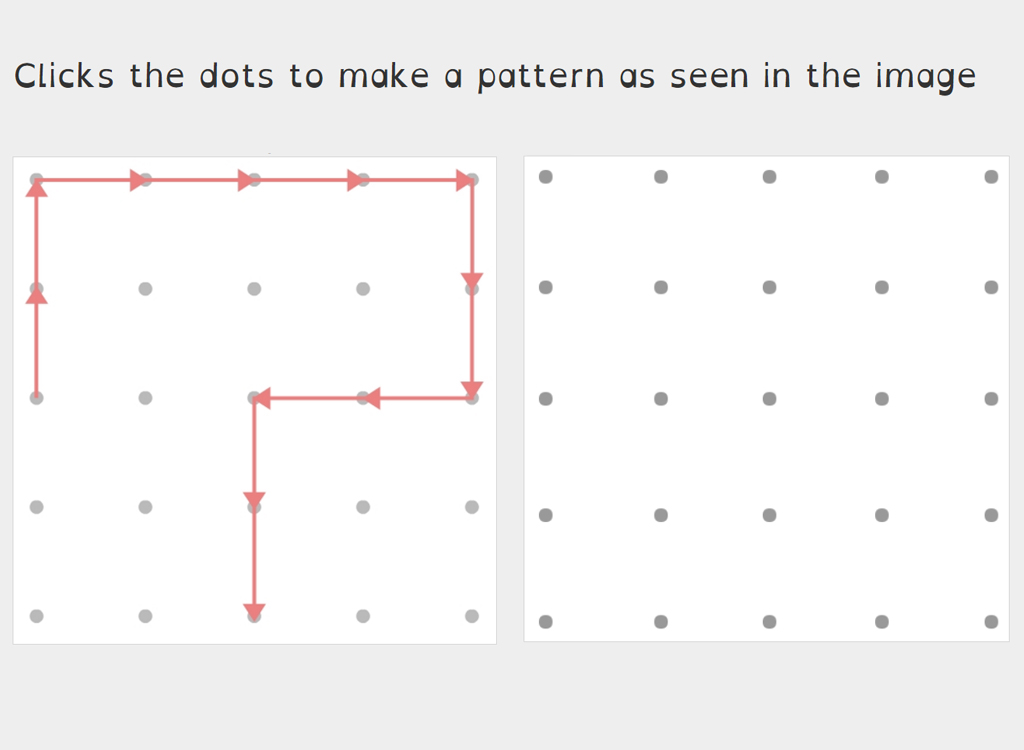Connect the Dots
This activity of connecting dots is an important tool for the parents to teach their children visual motor integration and directionality. It also helps children to improve hand eye coordination.
- Some children, while writing, have difficulty in following the margins. They don’t start writing from the margins.
- Some children reverse letters- ‘b’ for ‘d’ and ‘d’ for ‘b’ etc. Some may reverse letters within a word gilr for girl, dose for does etc.
- Some children cannot really understand the distance between objects. These children find it difficult to correctly judge the space between two words or the space between two lines. They have difficulty reading. They may skip lines while reading or copying.
- Some children have poor visual memory.
- Some children have difficulty with directions- they often confuse between left and right.And this is shown in their writing of letters ( b,d, h, etc.) and in copying numbers. They may not correctly copy the numbers from the question papers. This is very embarrassing for them while doing maths.
- This is an excellent activity for children with attention disorder(ADHD). These are children who cannot sit still for some time and who cannot concentrate. This activity is a fun way of improving a child's power of concentration..
Two grids with dots are shown side by side. There is a drawing connecting the dots on the left side grid. The challenge is to draw exactly, on the other grid, the model shown.How the dots are connected is shown in the form of arrows. There are quite a few challenging exercises!
Tips for you, the parents:
How to take this activity forward?
Find out if your child has visual processing difficulty. Does your child read well? Does your child take more time to copy from the board? Does your child skip lines while copying/ reading? What about her/his visual memory? Can your child recall the shapes/ design? Does she/he write legibly? Does your child show reversal of letters while writing, b for d and d for b etc? This activity tries to reduce to some extent these issues.
- In these exercises, the direction for connecting the dots is given. You can buy a white board. (Of course you can do this activity in a notebook. But the white board gives the child a larger surface area to write. ) Make two identical grids of dots. You can draw a pattern and ask your child to copy it on the other grid. The advantage here is that the direction of connecting the dots need not be given. The child can start from anywhere.
- Use this activity to improve your child’s visual memory.
After your child has done one exercise, ask her/him to draw the figure from memory. Initially, your child may not be able to draw correctly the shapes but with practice there could be improvement in visual recall. This exercise is also good for improving short term memory. This activity would help you to assess how strong your child’s visual and short term memories are.
- If your child has poor handwriting connecting the dots activity can be a remedy. You can teach your child the direction to be followed while writing. For example, many children with poor handwriting write some letters (f, t, etc) from bottom to top rather than from top to bottom. You can demonstrate to the child how to correctly write the letters. Writing of both upper case and lower case letters can be taught using this activity.
- If your child has problems in drawing geometrical shapes, connecting the dots can help.

- Depending upon the needs of the child, you can use this activity to remedy many learning issues.
1. Children’s magazines have many exercises involving connecting the dots.
2. Many activity books for children have these exercises.
3. Search the net and download similar exercises.
4. In Tamil Nadu, it is a tradition to draw geometrical designs at the entrance of the houses as a symbol of auspiciousness. The kolam is drawn by connecting dots. If your child has interest in drawing, then he may find drawing kolams an interesting activity. Even a child, who has no inclination for drawing, can practise making simple designs. As the drawing is done with powder held between the thumb and the index finger, this activity also helps to improve fine motor skills necessary for good handwriting. You can think of buying books on rangoli and kolams.


